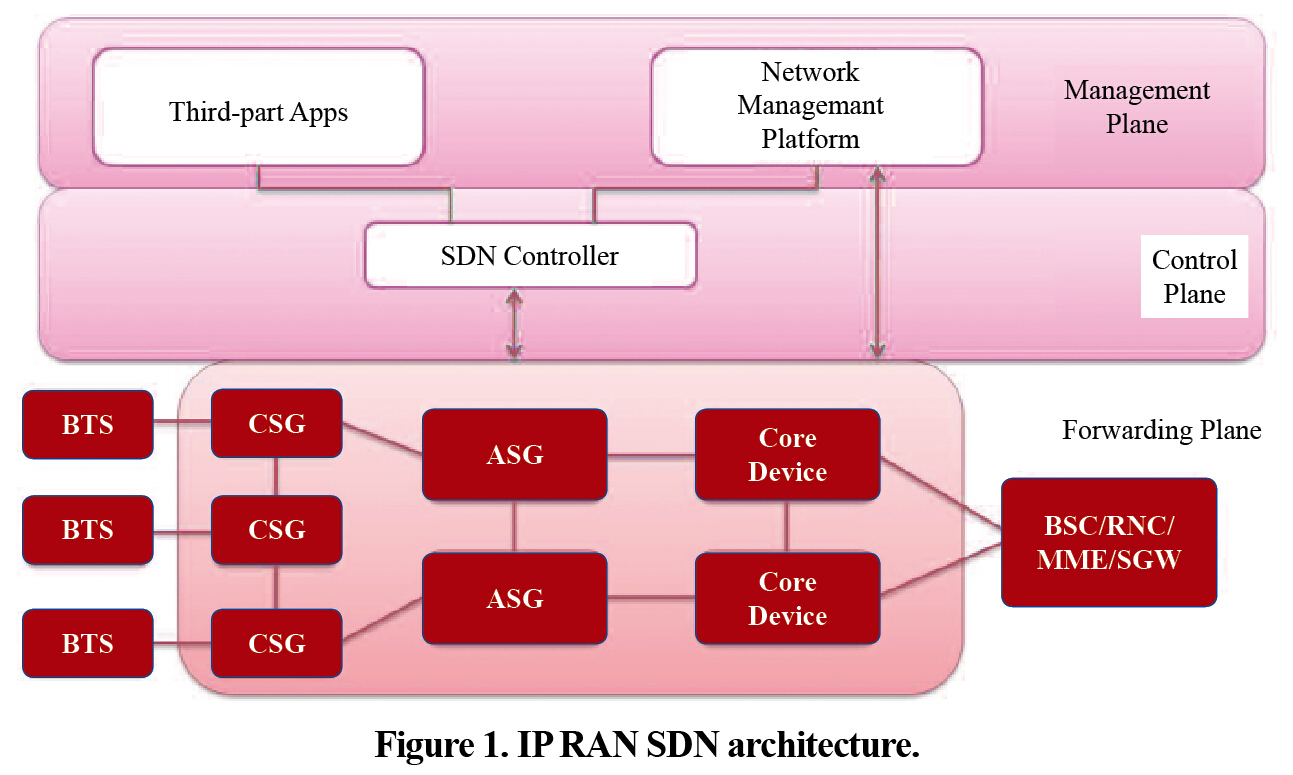Introducing SDN into IP RAN
Since all three major Chinese operators obtained their 4G licenses in 2015, mobile internet has grown rapidly in China. Data-oriented wireless services and IP-based mobile bearer networks are irreversible trends. IP RAN, which is a combination of IP and transport network technologies, is an important direction for 4G LTE mobile backhaul.
IP RAN has been deployed for many years, but with the vigorous development of 4G networks, it is facing new challenges:
● An IP RAN uses IP/MPLS. This makes the network more flexible but may increase complexity.
● An IP RAN is large and has numerous protocols. This may put stress on network deployment, service provisioning, O&M, and fault handling.
● An IP RAN requires network equipment to calculate routing, discover topology, and generate the path. The same requirements even apply to access routers. The high cost of software and hardware development leads to a high network construction cost.
Therefore, it is necessary to introduce a new technical solution to cope with the challenges faced by IP RAN.
SDN-Based IP RAN Solution
With separate control and forwarding, central control logic, and network virtualization, SDN has become a crucial technology to solve the problems associated with IP RAN.
With the separate control and forwarding architecture of SDN, IP RAN can strip complicated protocol processing and routing calculation from the forwarding layer into an SDN controller. This reduces network O&M complexity and shortens the fault handling time as well.
A centrally deployed SDN controller can provide IP RAN with an end-to-end view of services for unified control. This simplifies network deployment, service provisioning, and fault monitoring and handling, and improves operation efficiency. The SDN controller also controls the forwarding behavior of IP RAN in a centralized manner in order to realize highly flexible networking and optimally control traffic flow. This helps standardize network equipment and can effectively lower network capex.
The SDN architecture enables a virtual IP RAN that can virtualize all network elements controlled by the same SDN controller into a single logic device. This significantly reduces the number of network elements in the logical network and simplifies IP RAN structure.

In an IP RAN, most devices are at the access and convergence layers that have wide coverage areas including complex optical routes and fibers. The O&M workload is greatest in these areas and involves network adjustment and service cutover. An SDN can first be introduced in these areas to ease O&M pressure (Fig. 1). An SDN control plane may coexist with the existing network management plane for a certain period of time. The hierarchical relationships and differences among the forwarding plane, the SDN control plane, and the management plane are as follows:
● The forwarding devices are released from IP signaling attachment, and an SDN agent module is added for interacting with the SDN controller. The forwarding plane no longer cares about how forwarding paths are generated between network devices, but only cares about hard effects such as traffic forwarding, port efficiency, fast switching, and clock transfer.
● The SDN control plane is used for service control based on an OpenFlow extension. It discovers topology, delivers service configuration, and calculates the PW/LSP path.
● The management plane will exist for a long time and focus on modular functions such as NE management and flow detection. It interacts with the forwarding plane through the southbound interface, and interacts with the NMS and third-party applications through the northbound interface.
With an hierarchical SDN architecture, it is necessary to set up a separate SDN controller outside the IP RAN for unified management and control of IP RAN convergence and access routers. Using a single PC server to build a separate SDN controller has the following advantages:
● The SDN controller decouples the forwarding equipment. Network devices primarily focus on flow forwarding, while the controller only focuses on network topology calculation and resource scheduling. The SDN controller issues commands through its southbound interface, and the forwarding equipment analyzes the commands and executes the forwarding behaviors.
● The separate SDN controller provides network programming and service capabilities through its northbound interface. It can open IP RAN capabilities to boost network value.
● The separately deployed SDN controller helps standardize its southbound and northbound interfaces and also drives the long-term evolution of IP RAN.
● The external SDN controller fully utilizes servers and has strong service processing capability. With the cloud-based IT system, the controller can also be deployed on a virtualized cloud platform. This makes possible low cost deployment, elastic resource provision, and wide area network coverage.
The IP RAN SDN solution uses OpenFlow-based southbound interfaces as well as an external, separate PC server as its SDN controller. The solution fully considers the need of smooth evolution from existing IP RAN equipment to SDN forwarding equipment, and manages to fulfill the need at the lowest possible cost.
As the development of SDN is not long, adaptation to existing services is the key to SDN commercialization. ZTE has cooperated with domestic operators in developing the IP RAN SDN solution and has invited their network O&M and planning experts to research related applications and improve availability of the solution. ZTE is a market leader in IP RAN and will work with both upstream and downstream enterprises to help operators evolve their IP RANs towards SDN.